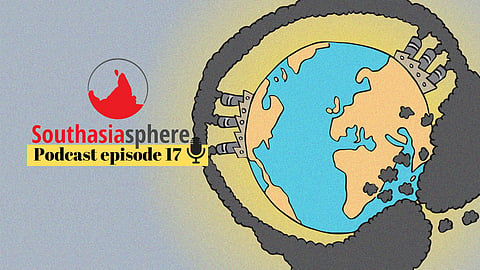Southasia’s climate crisis, violent crackdowns on protests, ‘Incantations Over Water’, and more.
Southasiasphere is our monthly roundup of news events and analysis of regional affairs. If you are a member, you will automatically receive links to the new episodes in your inbox. If you are not yet a member, you can still get it for free by signing up here.
In this episode, we look at how increasing volatility in climate events in Southasia, from untimely heavy rains and floods to unprecedented heat waves, is impacting countries already vulnerable to food insecurity and health care challenges. We also talk about how governments are cracking down on recent protests across Myanmar, Sri Lanka, India and Pakistan. In Around Southasia in 5 minutes, we discuss the wave of protests against the restrictive statute of limitations on rape and sexual violence in Nepal, life imprisonment given to Yasin Malik – a pro-freedom leader in Kashmir, and more.
Plus in our culture section Bookmarked, we talk about Sharanya Manivannan's debut graphic novel, 'Incantations Over Water', plus our monthly recommendations for reading and watching.

